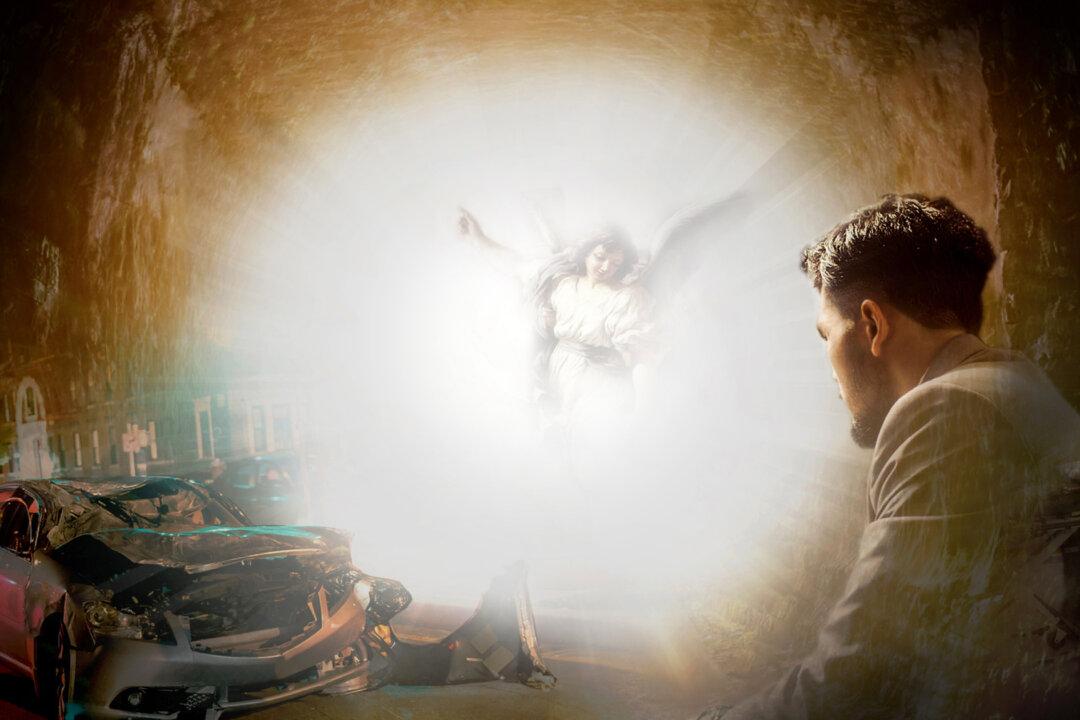Near death experiences (NDEs) have been reported through the ages by those who were near death—or thought they were—and then return.
Though these experiences are not all the same, they have many distinctive hallmarks: seeing a tunnel of light; seeing loved ones who have passed away; feeling bliss or euphoria; having a heightened sense of cognition; feeling a sense of great love; reviewing one’s whole life, often in a very short period of time; and feeling as if the soul has left the body. NDEs also tend to transform the lives of those who experience them—leading them to try to become better people.
These rich, interesting experiences have provoked the question of whether we truly do have souls, or if our consciousness is only a product of the brain. As brain science advances, there are an increasing number of claims that NDEs can be explained by neuroscience alone, thus obviating any need for an explanation based on the soul.
Explaining NDEs
But how well do these explanations from neuroscience hold up?
One very important piece of information is that about half of NDEs occur when individuals think they are going to die, but are not actually medically close to death. So for example, if someone fell off a building, and thought they were going to die, but only sustained minor injuries. This means that if we’re looking to the brain to explain all the different elements of NDEs, we need an explanation that accounts situations where the person is actually dying, and those where there is no real threat of death, in terms of one’s medical condition.
A common explanation that has been advanced by some scientists is that when the brain is deprived of oxygen, you can expect various patterns of response, particularly a sense of bright light in your center of vision. This kind of experience can indeed be induced by a lack of oxygen, but the problem is, not all NDEs involve anoxia, yet many still have the sense of a tunnel of light.
Furthermore, when the brain is out of oxygen, it starts firing rapidly in a disorganized fashion—it’s not working properly. From our knowledge of the brain, we would not expect organized experience in this state, but a jumble perhaps akin to what one might find in seizures or in mental illness—other examples of the brain not working correctly.
But what we get are vivid, organized, transformational experiences—people report that their NDEs feel “more real than real,” they feel free, that they understand the universe at a deep level, and have never been happier. This can happen both when the brain is not in immediate danger, and when it’s under severe duress because of a life-threatening situation.
Mind Power
Interestingly, when the brain is close to death, there is a higher incidence of cognitive enhancement—the mind feels unfettered and able to process more thoughts than usual. That we would find enhanced cognition under deprived conditions for the brain does not square with our understanding of brain function.
Another brain-based explanation is that the out-of-body experience (OBE) portion of NDEs is caused by a misfiring at the temporal-parietal junction, a region of the brain thought to be responsible for forming one’s body concept.
The evidence that this region is responsible for the feeling of people leaving their bodies and perceiving the nearby surroundings—sometimes nearby rooms and areas—is surprisingly weak. The most-often mentioned study, by Blanke and colleagues, is based on one patient, and the patient’s explanations indicated that though she felt like she was not in her body, she only saw her legs and her trunk—which she would have been able to see anyway.
The study only demonstrated that electrically stimulating this part of the brain can make people feel like they’re not in their body, but doesn’t produce any of the other perceptual qualities of an OBE, like seeing their entire body, floating around the room, and seeing the surrounding environment. In short, it failed to elicit anything qualitatively close to the out-of-body component of an NDE.
Life Review
Explanations for the life review—a phenomenon where the person’s life is reviewed, sometimes in great detail, and they feel remorse for selfish acts and satisfied with their “good” actions—are also particularly lacking.
One explanation, in a Scientific American article by Charles Choi, suggests that the brain region responsible for the life review is likely the locus coeruleus, an area that is involved in stress and is connected to areas that process emotion and memory. However, why would this area evoke an entire life’s worth of memories during death—or when death is thought imminent—and not elicit any memories during other extreme stress? And how does it explain the new moral insights that often accompany this aspect of an NDE?
Another article, by Mobbs and Watt, appearing in Trends in Cognitive Sciences, attempts to explain the life review by citing a single patient who exhibited REM (a characteristic state during dreaming) during an NDE. They conclude that the life review is probably related to REM because it happened during the NDE and is also associated with consolidation of memory.
One critical flaw with this argument is that REM has only been shown to be involved with the consolidation of procedural memories—things like learning a new skill such as riding a bike—and not for episodic memories that constitute the memories of one’s lifetime, as revisited in a life review.
Another major problem with the explanation, just like with the out-of-body example, is that it relies on only one patient. Relying on one example to make a generalization in a case like this is simply bad science, because you can’t know if it’s an exceptional situation.
Mobbs and Watt also try to explain the presence of loved ones who have passed away, giving the example that people with extreme Parkinson’s disease will sometimes hallucinate headless corpses, monsters, and ghosts, as well as dead relatives. Parkinson’s involves a problem with areas of the brain that produce the neurotransmitter dopamine, and the authors suggest that these hallucinations arise from a dopamine imbalance.
The problem with this is that almost all NDE cases report positive experiences, and feelings of love and bliss—not headless corpses. While there are some cases where people apparently experience something like hell and demons, the majority of cases are not this way.
A more significant problem is that in Parkinson’s disease cases, there is an awareness that these are hallucinations, whereas those with NDEs feel that it is real. This would, at the very least, suggest a different neural pathway.
A good explanation from neuroscience needs to not only actually account for each individual phenomenon, but do so in a way that combines them and explains how they happen together.
Confabulation?
Another explanation offered for NDEs is confabulation—that these experiences are concocted by the mind as a way of explaining a gap in consciousness. This has been offered by biologist P.Z. Myers, a noted skeptic.
Myers says that when people come back from clinical death and recount a story it doesn’t mean they were aware during the time of clinical death, it could just be the brain’s way of accounting for the lost time. In fact, he claims that this is the “the default understanding by neuroscientists of how the brain works,” in an article posted on Slate.
This explanation suffers from the same major problem as the other neuroscience explanations: about half of NDEs don’t happen in truly life-threatening situations, meaning these people didn’t go unconscious at all, and thus there’s no gap to account for.
The other problem is that confabulation sounds plausible at first, but in the scientific literature, confabulation of fantastic or extraordinary events—which an NDE would be considered—only happens in people with severe memory problems.
People who have recently had some sort of brain trauma and have trouble both learning new information and remembering old information will sometimes confabulate stories to explain things. These are occasionally quite fantastic, such as being a space pirate, but share little in common with NDE-type experiences.
The explanation suffers other weaknesses, as well. For one, this kind of confabulation goes away over time. Two, the stories often change. And three, they don’t have any qualities of ineffability, a hallmark of NDEs—that is, people try to explain what they went through, but acknowledge that words really aren’t adequate for describing the experience.
So confabulation is a kind of cheap explanation—it might sound good at first, but doesn’t fit with what’s known about confabulation, and completely fails to account for half of NDEs.
It is important to try to explain these phenomena through known mechanisms, because we don’t want to falsely believe in things, but we also have to acknowledge weaknesses or when an argument entirely fails.




